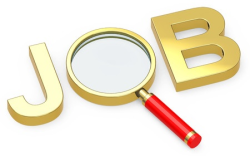Are Job Skills All You Bring to a New Career?
 In my last article I discussed the possibility that you’re ready for a career change and different things you should consider before you take the big step. In this article we’ll discuss another important part of a career change, and that is the idea that you bring more than job skills to a new job.
In my last article I discussed the possibility that you’re ready for a career change and different things you should consider before you take the big step. In this article we’ll discuss another important part of a career change, and that is the idea that you bring more than job skills to a new job.
The process of making a career change involves identifying what you bring to a job, where you find your greatest sense of fulfillment, and then finding opportunities that offer those, rather than looking at job announcements to see where you can find one that uses what you have. You start with you and find the job to match, rather than starting with the job and trying to match it to you and what you want.
A job search begins with identifying you…
- You are a unique individual. There is no one else that has the same combination of personal characteristics, strengths, skills, abilities, talents, character and more that you have. The following projects are designed to help you identify just who you really are and the distinctive that make you, you and then how to weave those together into a job.Many of these projects or tasks are on-going. You start them and come up with your initial findings, and then you want to keep them going so that you can add to them as you think of other things. You develop your initial list of strengths, and just like anything you do, when you set it aside and then come back to it you can add more ideas after it has percolated in the back of your brain for awhile. So it is with many of the suggestions that follow. Don’t look at them as a one-time and done kind of assignments.
 Let’s start by doing a thorough personal assessment of your strengths and weaknesses. Take a full-size sheet of paper and draw a t-chart that uses the entire page. On one side of that t-chart list your strengths and on the other side your weaknesses. List everything you can think of that you see in both categories. List what you think of yourself. List what others have told you about yourself. Include feedback from performance reviews on the job, whether you completely agree with them or not. Include input from your spouse, children, other members of your family, friends, small group members, fellow students, church members, your volunteer buddies, those you enjoy recreation with.
Let’s start by doing a thorough personal assessment of your strengths and weaknesses. Take a full-size sheet of paper and draw a t-chart that uses the entire page. On one side of that t-chart list your strengths and on the other side your weaknesses. List everything you can think of that you see in both categories. List what you think of yourself. List what others have told you about yourself. Include feedback from performance reviews on the job, whether you completely agree with them or not. Include input from your spouse, children, other members of your family, friends, small group members, fellow students, church members, your volunteer buddies, those you enjoy recreation with.
- On your first pass at listing your strengths and weaknesses you should work to have at least 10-15 strengths and an equal number of weaknesses. This is for your eyes only, so be completely, brutally honest with yourself. Eventually you should end up with a list of at least 30-50 strengths. Of course, all of your strengths will not be equal, some will be much stronger than others, but you can view than all as strengths. You should also end up with a good list of weaknesses. The weaknesses are important because they will help you define what you do not want your new career to focus on. Start your list right now, and keep adding to it in the days to come so that you eventually get to the goals described above. Use this listing of your strengths and weaknesses to begin your career change portfolio where you will keep all of the insights, projects, and work that you do as you investigate your career change. It will provide you with one go-to source that contains all of your work. This will be important when you get to the place of actually beginning a job search for your new position, so don’t take creating this portfolio lightly.
- Next, you will want to explore your personality traits, your personal characteristics, your temperament, and your emotional make-up. This is another way of looking at your strengths, but will give you a different perspective on yourself. Here are a two free, self-scoring online assessment instruments that will help you to gain this new insight into yourself.
- Based on Myers-Briggs Type Indicator (MBTI)
Based on Kiersey Temperament Sorter
When you have completed the assessments, print out what each assessment says about your type, your personality, your profile, or whatever they call it. Print out the reading provided about you and add it to your career portfolio. -
Take the time to read through the various articles provided to see what they have to say about your profile. You won’t agree with everything, but you will find surprising insights into who you are and the strengths and characteristics that you possess. Make some notes of the highlights of what you read to summarize what you discover.
- Based on Myers-Briggs Type Indicator (MBTI)
In a future article I will provide you with another resource, a personality traits checklist for you to identify some of your most common traits. What you will find is a listing of many common personality traits. You will be able to identify many that you will feel are true of you.
If you would like to explore working with a career coach, contact us for a no-obligation consultation and we can discuss your situation and what you would like to achieve.

Comments are closed.